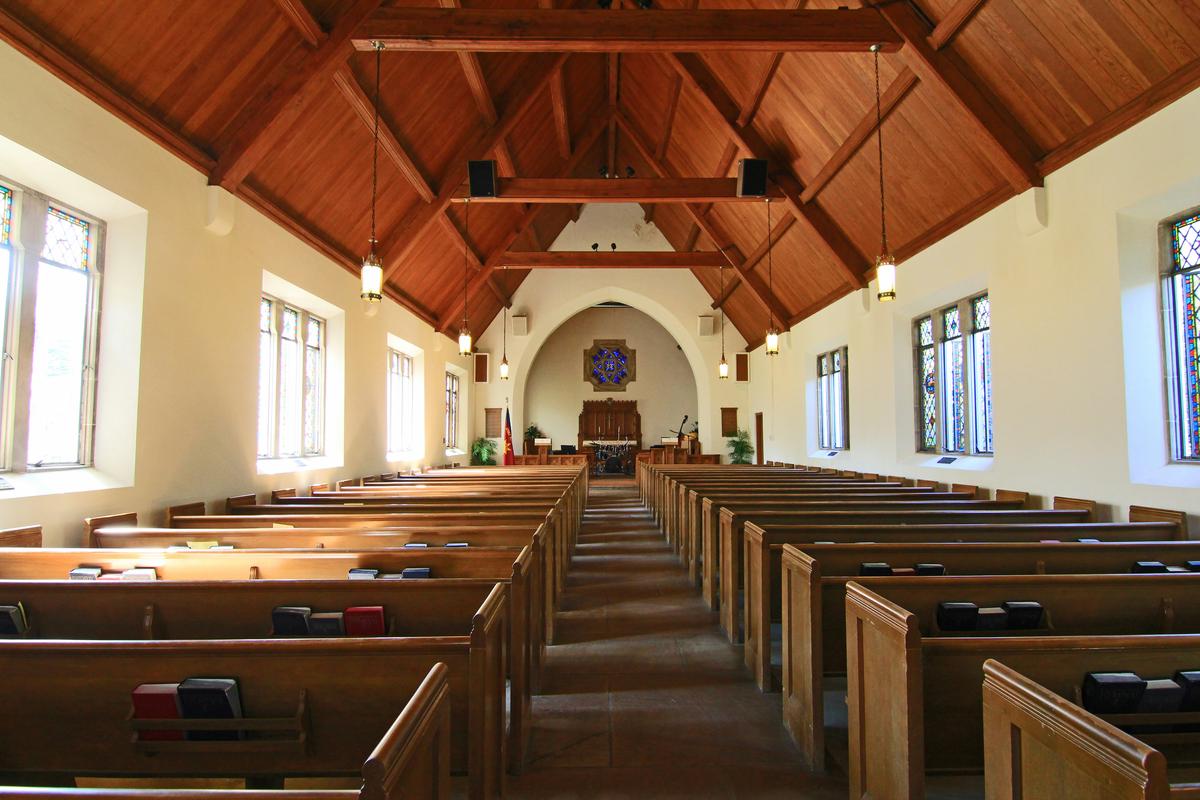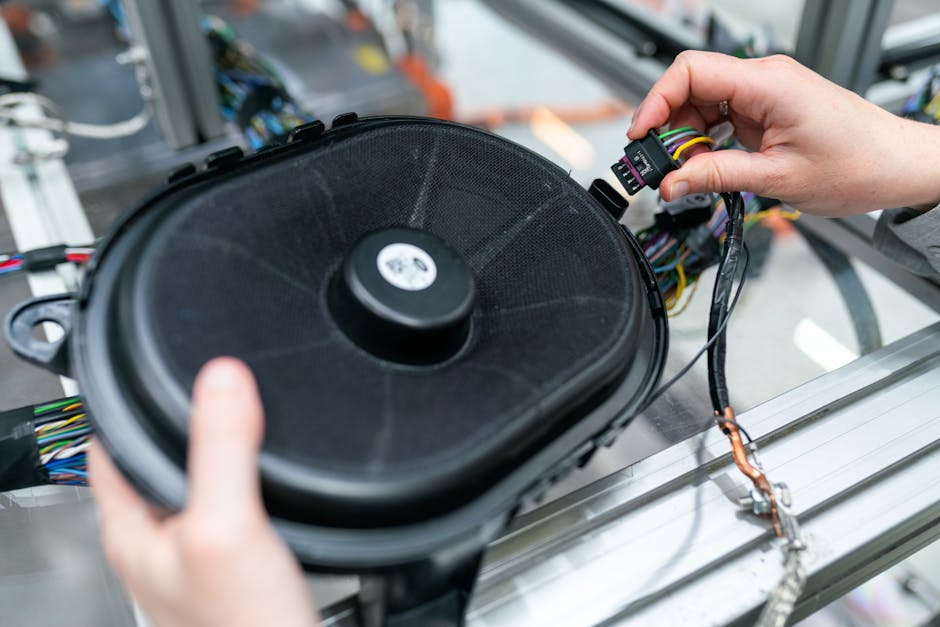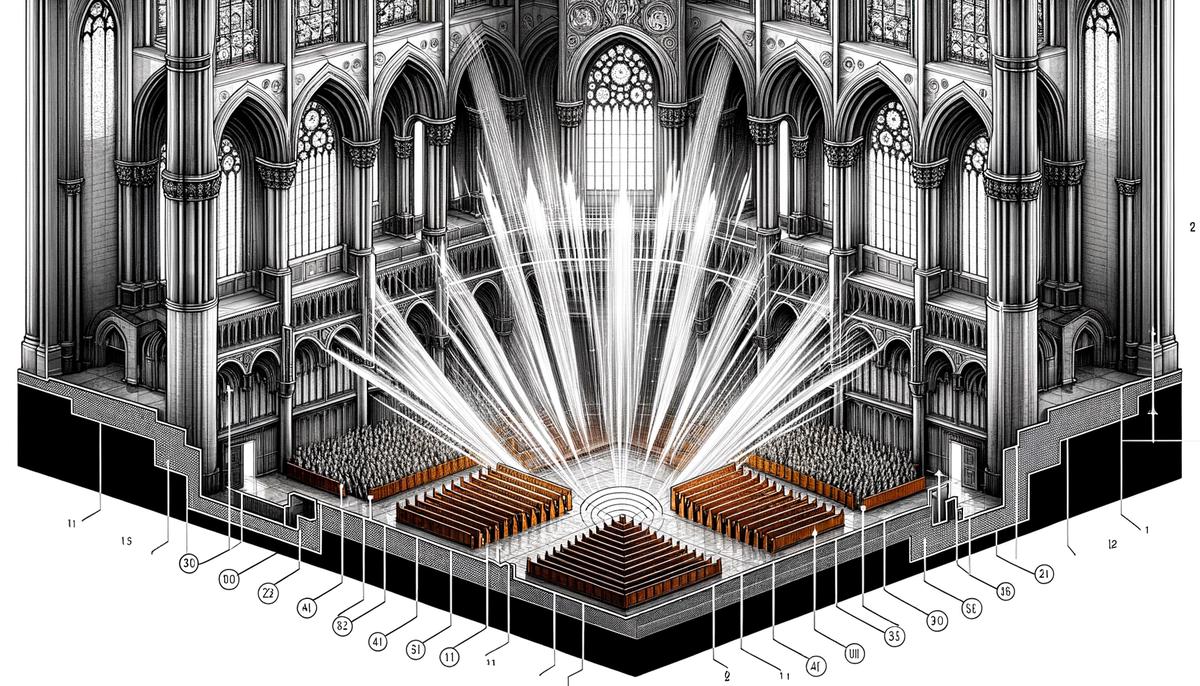Churches are known for their awe-inspiring architecture and the peaceful solitude they offer, but there’s a science to how they sound as magnificent as they look. This exploration will shed light on the intricacies with this guide to church acoustics, revealing how architecture, materials, and modern technology come together to create an environment that enhances both the spoken word and the melodies that fill their sacred spaces. Let’s take a look at this ultimate guide to church acoustics optimization.
The Basics: A Guide to Church Acoustic Optimization
Understanding Church Acoustics: A Deep Dive into Their Unique Sound
Churches, with their vast spaces and towering ceilings, offer a degree of acoustical complexity seldom found in modern structures. At the heart of this unique sound environment is the architectural design, tailored over centuries to elevate the religious experience. Let’s explore what sets church acoustics apart and how these sacred spaces are engineered for sound with this guide to church acoustics.
The architectural splendor of churches isn’t just for visual impact; it plays a crucial role in shaping sound. High vaulted ceilings and expansive interiors, a common trait in churches, allow sound waves to travel and reflect differently compared to standard rooms. This results in a longer reverberation time, which is the duration sound waves continue to bounce around the room before fading out. In essence, the sound lingers, enveloping the congregation in a rich, immersive auditory experience.
Materials used in church construction also contribute significantly to their unique acoustics. Stone and marble, which are often favored for their durability and aesthetic appeal, have hard, reflective surfaces. Unlike softer materials like wood or carpet that absorb sound, stone and marble reflect it, further enhancing the reverberation within the space. This characteristic amplification is especially beneficial for choral music and organ performances, allowing the melodic harmonies to fill the church with ease.
But there’s a balance to strike. Too much reverberation can muddle speech, making it difficult for the congregation to understand spoken words. Churches often address this challenge through strategic design choices, such as incorporating wooden elements within the pews or using decorative fabric wall hangings. These materials help absorb excess sound, ensuring clarity in speech without sacrificing the enriching sound quality during musical performances.
Moreover, the placement of musical instruments and speakers plays a pivotal role in optimizing church acoustics. Organ pipes are typically situated high up in the church, allowing sound to cascade down and fill the space evenly. Speakers, on the other hand, are carefully positioned to direct sound toward the congregation, minimizing echoes and feedback.
In contemporary churches, acoustical engineering has evolved to embrace technology, balancing traditional architectural elements with modern sound reinforcement systems. This includes the use of directional microphones and digital sound processing to fine-tune acoustics, ensuring that whether it’s the spoken word or choral music, the sound is always clear, immersive, and uplifts the spiritual experience.
The acoustics of a church are a testament to the ingenious blend of architecture, materials, and technology, consciously designed to create a sound environment that is as emotionally impactful as it is spiritually uplifting. Through thoughtful design and acoustical planning, churches continue to stand as unparalleled spaces for sound, providing a setting that enhances both the solemnity and the communal joy of worship.

A Guide to Church Acoustics: The Role of Acoustic Treatments
Understanding Acoustic Treatments in Churches
Acoustic treatments in churches play a significant role in refining sound quality, ensuring that the spoken word and musical performances reach every corner of the space clearly. Acoustic panels, diffusers, and bass traps are just a few tools used to achieve this goal, each serving a unique function in the quest for auditory perfection.
- Acoustic panels, often made from foam or fiber, are strategically placed on walls and ceilings to absorb excess sound. This helps in reducing echoes and reverberations that muddy the clarity of speech or music. By targeting specific frequencies, these panels can minimize unwanted noise while preserving the natural acoustics that give church music its ethereal quality.
- Diffusers are another critical component. Rather than absorbing sound, diffusers scatter it evenly throughout the church. This ensures that sound waves don’t bunch up in one area, creating hotspots or dead zones. The even distribution of sound makes the listening experience more uniform, regardless of where one is seated.
- Bass traps tackle the challenge of low-frequency sounds which are harder to manage because of their long wavelengths. These sounds can easily overpower clarity in music and speech if not properly controlled. Positioned in corners where bass frequencies tend to build up, bass traps absorb these low tones, balancing out the overall sound profile.
Together, these acoustic treatments transform the acoustics of churches. The attention to detail in placing these elements helps in maintaining the architectural integrity and aesthetic appeal of the space. Churches with effective acoustic treatments offer a vibrant auditory experience, where every note and word is crisp and clear, without losing the ambient echo that adds depth to choir performances and organ recitals.
This delicate dance between preserving tradition and embracing innovation marks a new era in church acoustics. It showcases a commitment to enhancing the worship experience through sound, making every service a more inclusive and immersive ordeal. The careful consideration of acoustic treatments underscores the importance of sound in spirituality, elevating the connection between the congregation and the divine.
A Guide to Church Acoustics and Incorporating Technology for Acoustic Enhancement
Ensuring the best acoustics in a church isn’t just about keeping the architecture beautiful—it’s also about making sure every sermon and piece of music reaches the congregation in the clearest way possible. With advances in technology, there are now more solutions than ever to enhance church acoustics without sacrificing the traditional look and feel these spaces are known for.
One significant technological solution comes in the form of electronic sound enhancement systems, sometimes referred to as active acoustics. These systems use microphones to pick up sounds from sources like the pastor’s voice or the choir’s singing and then process these sounds through a computer. After a quick calculation, the system then plays the sound back into the room through strategically placed speakers. This isn’t just a simple echo; it’s a carefully designed sound that can make the church’s interior sound larger or smaller, as needed. This flexibility is groundbreaking for churches that host a variety of events, from quiet, contemplative services to boisterous musical performances.
Another cutting-edge approach is the installation of digital signal processors (DSP). These processors can fine-tune the sound within the church by adjusting levels, frequencies, and timing. What’s amazing about DSPs is their ability to target specific issues in sound quality, such as enhancing speech intelligibility or tuning the audio environment for optimal music performance. They do this while maintaining the natural acoustic characteristics of the space, ensuring that any technological intervention is practically invisible to the congregation.
Moreover, wireless microphone technology has dramatically evolved to serve church needs better. With the congregation now spread out and the widespread use of multimedia presentations, ensuring that every word is heard clearly regardless of where someone is seated has become imperative. Advanced wireless systems offer crystal-clear audio transmission, resist interference from external sources, and integrate seamlessly with other acoustic enhancement technologies. This means pastors can move freely, interact more dynamically with the congregation, and ensure their message is delivered effectively.
For larger or historic churches where installing extensive new technology might be challenging, portable sound systems present an alternative. These systems come with their microphones, speakers, and mixers. They can be set up temporarily for specific events and then removed, offering flexibility without permanent changes to the church’s interior. Portable systems have become increasingly sophisticated, offering sound quality that rivals permanent installations, making them an excellent option for enhancing acoustics during special events or in parts of the church not covered by the main system.
Finally, embracing smart technology and IoT (Internet of Things) devices can play a pivotal role in managing church acoustics. Smart devices can monitor sound levels, reverberation times, and other acoustic parameters in real-time, providing data that can help fine-tune the space’s acoustics. This tech can even automate certain adjustments, ensuring the acoustic environment remains optimal for each service or event, with minimal manual intervention.
In conclusion, the interplay between tradition and technological advancement offers exciting possibilities for church acoustics. By adopting these innovative solutions, churches can maintain their sacred atmosphere while ensuring the sound quality meets modern expectations. This not only enhances the worship experience but also ensures that every message, note, and nuance is conveyed with clarity and warmth, fostering a deeper spiritual connection within the congregation.

Guide to Church Acoustics: Planning and Executing an Acoustic Optimization Project
Embarking on an acoustic optimization project in a church requires meticulous planning and execution, ensuring that the spiritual ambiance and auditory clarity are harmoniously balanced. The process involves several critical steps, each tailored to address the unique acoustical challenges posed by church settings. Here’s a closer look at how these projects unfold, capturing the essence of preserving tradition while integrating modern acoustical solutions.
Initial Acoustic Assessment
The first step is carrying out a detailed acoustic assessment of the church. This involves measuring current sound levels, identifying sources of noise, and understanding the ways in which sound interacts with the church’s interior surfaces. Professionals use specialized equipment, like sound level meters and computer modeling tools, to map the sound landscape, pinpointing problem areas that require attention.
Consultation with Acoustic Experts
Following the assessment, church officials consult with acoustic experts to interpret the data and explore potential solutions. This collaboration is crucial for setting realistic expectations and aligning the project’s goals with the church’s vision. Experts bring a wealth of knowledge on how to blend aesthetics with functionality, ensuring that any proposed changes respect the church’s architectural integrity.
Customized Acoustic Design
With a clear understanding of the church’s acoustical needs, experts then draft a customized acoustic design. This design considers factors such as the optimal placement of sound-absorbing materials, the selection of appropriate technology to enhance sound quality, and strategies for minimizing external noise intrusion. The design phase is iterative, allowing for adjustments based on feedback from church stakeholders.
Selection of Materials and Technology
Choosing the right materials and technology is pivotal for achieving the desired acoustic improvements. This ranges from selecting the specific types of acoustic panels and diffusers to integrating advanced sound systems that can adapt to different liturgical needs. The selection process also involves considering the longevity and maintenance requirements of these materials and technologies, ensuring they provide lasting benefits.
Implementation Phase
The implementation phase sees the physical installation of acoustic treatments and technology within the church. Skilled technicians and artisans work closely to install panels, diffusers, bass traps, and sound systems, adhering to the precise specifications outlined in the acoustic design. This phase may also involve structural modifications to the church’s interior to accommodate the selected solutions, always with an eye towards minimizing disruption to church activities.
Fine-tuning and Calibration
Once the physical installations are complete, the focus shifts to fine-tuning and calibrating the new systems to optimize sound quality. This involves adjusting digital signal processors, calibrating wireless microphones, and testing portable sound systems to ensure they function seamlessly within the church’s unique acoustical environment. Experts spend considerable time tweaking settings to achieve the perfect balance between spoken word clarity and musical richness.
Training and Ongoing Support
The project concludes with training for church staff and volunteers on how to operate the new sound systems and maintain the acoustic treatments. Providing comprehensive manuals and offering ongoing support is crucial for empowering the church community to manage their upgraded acoustical environment confidently. This final step ensures that the benefits of the optimization project are fully realized during services and other events.
Throughout the planning and execution of an acoustic optimization project, the emphasis remains on enhancing the worship experience. By incorporating tailored acoustic solutions, churches can achieve a sound environment that fosters spiritual connection and community, ensuring that every sermon and musical note resonates deeply with the congregation.

As we’ve uncovered in this guide to church acoustics, the sound within a church’s walls is no mere happenstance. It is the result of meticulous planning, an understanding of acoustic principles, and an embrace of technology, all designed to ensure that every sermon and hymn reaches the congregation in the purest form. The art of optimizing church acoustics is a testament to the dedication to preserving the spiritual essence and communal aspect of worship. Through this harmonious blend of tradition and innovation, churches continue to be places where sound enriches the soul and fosters a deeper connection with the divine.













